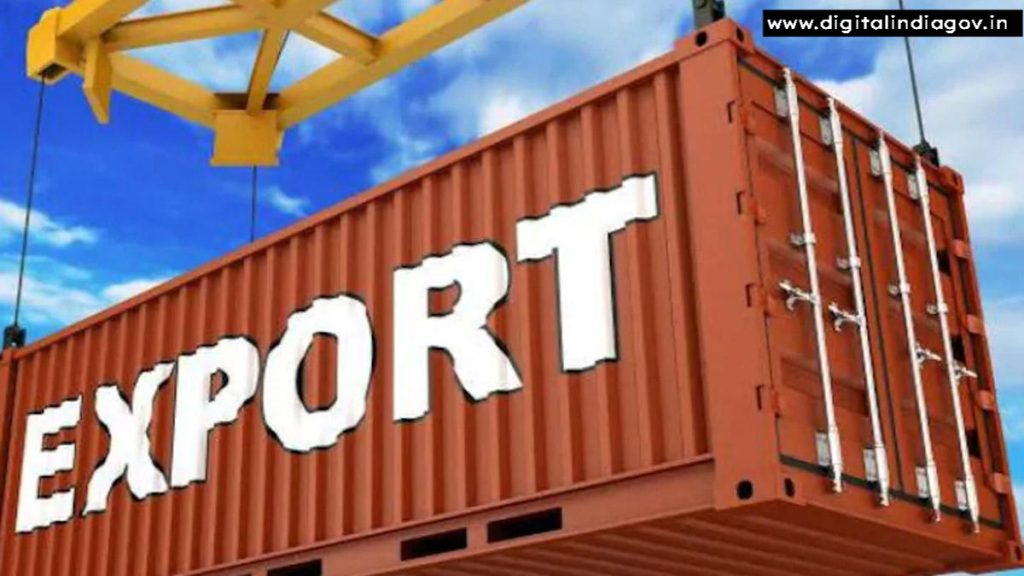EPCG Scheme:- The purpose of the Export Promotion Capital Goods (EPCG) Scheme is to increase the competitiveness of India’s exports by enabling the import of capital goods for the manufacturing of high-quality items. Capital goods are allowed to be imported duty-free throughout the pre-, production-, and post-production stages under the EPCG program.
Update on the budget for 2024:
A few of the items whose customs duty rates are shifting are as follows: – a 2.5% decrease in the basic and special additional excise duty on petrol and high-speed diesel oil (both branded and unbranded), from a 5% reduction in the levy on copper scrap. Raising the 5% to 20% tax rate on solar inverters – Increased the 5% to 15% solar lighting tariff Silver and gold carried a base customs duty reduction. The department will simplify tariffs on chemicals, textiles, and other goods.

Also Read:- YSR Bheema Scheme, Digitize India, Digitize India Platform, Work From Home Jobs, Celebrity Phone Number
Contents
EPCG Scheme (Export Promotion Capital Goods Scheme)
Businesses that import capital goods with an export focus are eligible to import them duty-free under this program. However, within six years of the license’s issuance, the program must have an export value equal to six times the tariff savings on the import of such capital items. Once you apply for the Export Promotion Capital Goods Scheme, you have six years to complete this task.
“Export promotion capital goods” are capital goods that are employed in the production of items that are exported. It comprises both spare parts and machines. Thus, in order for a product manufactured in India to qualify as an export promotion capital good, it must be shipped outside of the country.
Capital Goods allowed under the EPCG Scheme
- Export Promotion Capital Goods Scheme allows capital goods such as fixtures, jigs, tools, molds, dies, and spares (including reconditioned/refurbished items). Furthermore, there are no age restrictions on the importation of used capital goods under the EPCG Scheme.
- The Foreign Trade Policy (FTP) plan allows for the import of capital goods at a zero or concessional rate of tariff, provided that they are needed for the production of export-oriented commodities, as per the Export Promotion Capital Goods Authorization. The foreign trade policy program permits indigenous businesses to advance technologically.
- The Director General of Foreign Trade (DGFT), the licencing authority, grants Export Promotion Capital Goods (EPCG) authorizations in accordance with the certificate that an independent chartered engineer issues.
Benefit from EPCG Scheme
The Indian government uses the EPCG programme to encourage exports by providing financial support and incentives to exporters. This feature could be advantageous for heavy exporters. It is not advisable to move forward with this strategy for those who do not intend to manufacture in large quantities or who only aim to sell their produce locally, as it could become practically impossible to achieve the requirements outlined in it.
EPCG License
The Director General of Foreign Trade’s licencing authority must receive an application before granting a licence under the EPCG system. All required documentation, your personal data, and the company’s details must be included with the application.

Also Read:– PMEGP Scheme, Digitize India
Documents required for EPCG License
The Director General of Foreign Trade (DGFT) is the licencing authority that issues licences. ANF 5B must be provided with the following self-certified copies:
- Import Export Code (IEC)
- Registration cum Membership Certificate (RCMC)
- Digital signature
- Registration certificate from Tourism Department
- Pan Card
- Excise Registration (if registered)
- GST Registration Certificate
- Proforma Invoice
- Brochure
- Self-Certified Copy + Original of Certificate of Chartered Accountant
- Self-Certified Copy + Original of Certificate of Chartered Engineer
Export obligation under the EPCG scheme
Within six years of the EPCG authorization date, capital goods imported under the EPCG plan must meet an export requirement equal to six times the tariff saved. The importer of the capital goods shall pay customs charges and interest on them as indicated in the event that the holder of the EPCG authorization is unable to fulfil the specified export obligation.
Points to Remember
Extension of the time limit
The exporter may request an extension of the time restriction, but only in extraordinary circumstances when he can provide adequate evidence or proof that the reasons beyond his control prevented him from meeting the deadline.
Penalty in case of Non-Compliance
Should the license holder under the EPCG system neglect to complete the specified export obligation, they would be responsible for paying the customs duties to the customs authority along with an annual interest rate of 15%.
Selling goods in the Domestic Tariff Area (DTA)
Only this company may sell the items in the Domestic Tariff Area provided the exporter satisfies exporter requirements and export deadlines.
Exemption from IGST & Compensation Cess under EPCG scheme
Merchant exporters must pay IGST and request a refund under the Goods and Services Tax regime. By Notification No. 54/2015-20, the DGFT modified the Foreign Trade Policy (FTP) and prolonged the exemption from IGST and Compensation Tax under the EPCG Scheme until October 1, 2018. This will provide much-needed comfort to exporters who are anxious about refunds under the GST regime.
Historical case on EPCG License
- ABC Inc. was a manufacturer of hosiery yarn with partial combs. The business operated in good faith and unwittingly relied on XYZ Pvt. Ltd. consultant Mr. X, who gave them shipping invoices from particular exporters. They received assurances that this would qualify as an export.
- After that, ABC Inc. sent these shipping bills to DGFT in order to fulfil its export duty. The claim was approved at the time of the investigation since third-party export procedures are frequently engaged in EPCG-related circumstances.
- The investigation revealed that the goods were not, in fact, exported. Since the company had not exported the yarn, they had broken the terms of its EPCG licence. Business entered a guilty plea. However, a detailed investigation of the matter revealed that the products were not ABC Inc.’s ultimate output. Because the terms and conditions of the Scheme were not followed, capital goods worth INR 6.05 crore that were imported were seized under section 108 of the Customs Act 1962.
- ABC Inc. has avoided paying INR 1.38 crore in custom duties. Before the products could be used again, this got past due. Interest also became payable, as did the repayment of previous benefits such as the previously granted drawback and the received TED refund.
- Failing to meet the export obligation resulted in a hefty penalties.
- Before applying for an EPCG licence, it is imperative to carefully analyze export strategies, even if it may be a highly profitable option for qualified enterprises.

Also Read:- Agneepath Scheme Apply
FAQ’s
Q. What does Epcg stand for in full?
Ans- Under the Export Promotion Capital Goods (EPCG) plan, an exporter can import capital goods, including spare parts for pre-, production-, and post-production for no customs charge in order to export them.
Q. What is the strategy for 3% Epcg?
Ans- The EPCG Scheme allows for the concessional 3% duty import of capital goods, including computer software systems and their CKD/SKD, at a cheaper customs tax of 3%. However, there is an export requirement equal to eight times the duty saved on capital goods imported under the EPCG scheme.
Q. When did the EPCG initiative get underway?
Ans- It is an initiative by the Indian government to promote trade. It allows duty-free importation of capital goods into India for the purpose of producing items for exportation. It went into effect for the first time on April 1, 2015.
Suggested Link:- Our Jharkhand
@PAY
